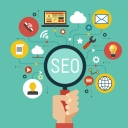The Need For Speed: Why load time matters more than ever in 2023
In today's digital landscape, information is only a click away, Website speed has emerged as a crucial factor to both users and businesses. For sure, nobody wants a slow website. Nobody has the time for that in 2023!
The psychological aspect of impatience plays a significant role in people's low tolerance for slow websites. This is not to shed a negative light on humans but to show how competitive and fast-paced our world has become.
A fast-loading website can significantly impact user experience, search engine rankings, and overall success - whether you're a business or a content creator. By leveraging the competitive advantages of a fast website, you can position yourself ahead of competitors.
In this article, we will delve deeper into the significance of good website speed, shed light on the negative consequences of a slow-loading website, and explore critical factors that need to be considered to optimise website performance.
Good website speed vs. bad website speed
Here's a quick guide on assessing if your website has a good or bad website speed. This briefly overviews the difference between website speeds across various aspects.
| Good Website Speed | Bad Website Speed | |
|---|---|---|
| Loading Time | Fast loading time (typically under 3 seconds) | Slow loading time (exceeding 3 seconds) |
| User Experience | Smooth, seamless browsing experience | Frustrating, delayed user experience |
| Engagement | Higher user engagement and longer visit durations | Higher bounce rates and shorter visit durations |
| Conversions | Increased conversion rates and a higher chance of success | Decreased conversion rates and missed opportunities |
| Search Rankings | Improved search engine rankings and visibility | Lower search engine rankings and decreased visibility |
| Mobile Experience | Optimised for mobile devices with fast loading times | Poor mobile optimisation with slow loading on devices |
| Brand Perception | Positive brand perception, professionalism, and trust | Negative brand perception, unreliability, and mistrust |
| Competitiveness | Enhanced competitive edge against slower websites | Disadvantage against faster, more optimised websites |
Investing in website speed optimisation is a strategic move that reaps great rewards for user satisfaction, business success, and staying ahead of the competition.
The average loading time for websites in 2023
According to a survey by Tooltester, this should be the average website loading time in 2023.
- Average web page load time: 2.5 seconds on desktop and 8.6 seconds on mobile.
- Webpages on mobile: take around 70.9% longer compared to desktop.
- Desktop usage: have the highest average pages per session of 3.4.
Google started to reward the websites that give a good user experience, which considers page load speed and mobile-friendliness as a factor for search result rankings. So, site speed is an essential factor for Google.
Google Consumer Insights found that any loading page that takes more than 3 seconds will likely lose site visitors.

The psychological aspect of impatience and waiting
When people get impatient and have higher expectations of website speed and quality, it encompasses many psychological aspects. Here are a few reasons why you must have a fast and reliable website:
1 Instant Gratification: Quick results and immediate access to information is a must in today's digital age. Waiting for a slow website to load contradicts this desire for instant gratification.
2 Attention Span: The abundance of choices and alternatives available online makes it easy for users to abandon a slow-loading website and move to a faster one.
3 Efficiency and Productivity: Slow websites disrupt workflow and save precious time. Users are likelier to leave a slow website and seek faster alternatives to accomplish their goals quickly.
4 Perception of Reliability and Professionalism: Slow websites can negatively perceive a company or brand. Slowness can be associated with outdated technology, poor website management, or lack of attention to detail.
5 Emotional Response: Negative emotions such as annoyance and frustration can be evoked by slow-loading websites, potentially damaging a business's reputation.
In short, websites must prioritise speed and provide a seamless browsing experience to meet users' expectations and create a lasting positive impression.

Key factors affecting website speed
Many factors can influence website speed. Without going too much in detail, here are the key factors you need to consider.
1 Hosting Performance: It is essential to know the performance of your web hosting provider. Shared hosting can be slower than dedicated or virtual private servers (VPS). Ensure you choose a reliable hosting provider that offers sufficient server resources.
2 File Size and Compression: Larger file sizes can significantly impact website speed. Optimising and compressing files without compromising quality is essential.
3 Browser Caching: By leveraging browser caching, you can improve load times for returning visitors by utilising stored resources from their previous visit.
4 Content Delivery Network (CDN): A CDN is a network of servers located across different geographical locations. This helps reduce latency and improve website speed.
5 Code Optimization: Clean, efficient, and well-optimized codes can improve website performance significantly.
6 Network and Connectivity: Factors like these are outside of your control. While you cannot control your users' connections, optimising your website's performance can mitigate the impact of slower network conditions.
This is why it's crucial to be familiar with website speed tests and different specifications for different websites. Regular monitoring, testing, and optimisation are necessary to maintain optimal website performance.
In an era where speed and efficiency are paramount, investing in website speed optimisation is a strategic decision that pays off in terms of improved search engine visibility, increased user satisfaction, and higher conversion rates.
By prioritising website speed, businesses can establish a strong online presence, outperform competitors, and create lasting impressions that drive growth and success in the digital realm.





